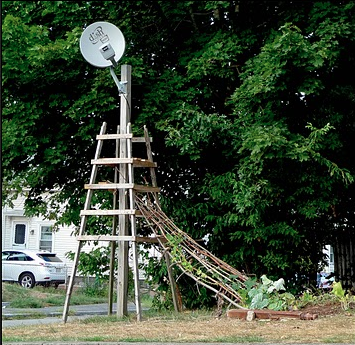Permaculture Design Principles
Several permaculture design principles here are relevant to our design process. Of note: “Value the Marginal”; “Catch and Store Energy”; “Design from Pattern to Detail”; “Use Small, Slow Solutions”
the language of war
interesting to note the language of military invasion being used to describe ecological phenomena: “A salt marsh is born by the arrival of a seed or the rafting of a plant of the cord grass Spartina alterniflora. The grass spreads asexually by means of a subterranean rhizome system. The grass becomes dense and forms a […]
harbor journey research field images
some of the least disturbed marshland of Boston Harbor area and along quincy beach shoreline Nutt Island view and from east boston shore towards Boston skyline looking at industrial waterfront Chelsea neighborhoods and finding a bit of salt marsh family at the Condor Street Urban Wild in East Boston
flotant design
some thoughts on design needs needs anchor to harbor bed structure must be very robust to withstand high waves, winds (is a bendable structure most ideal?), should it be boatlike, or island like, or buoylike use recycled materials for floating: water and milk bottles needs a porous meshlike material for roots to grab onto roots […]
smooth cordgrass care
from this pdf Smooth cordgrass is critically sensitive to reduced soil sulfides, a condition common to anaerobic and brackish marsh soils. Smooth cordgrass should not be planted outside of the tidal zone. Smooth cordgrass will tolerate fluctuating water levels. Optimum water depths for establishing plants are 1” to 18”. Plantings in deeper water have been […]
the project
Marsh Radio Island Community Supported – Salt Marsh Flotant – Communication Station Marsh Radio Island is a project that activates the interconnectedness of humans and plants in the urban port city ecosystem of Boston by deploying designed flotants (modular salt marsh habitats) for growing salt marsh plant species of the future. It offers a […]
boundaries and borders
“If Entelechy aspired to be a landscape I think maybe it would be a salt marsh; an intertidal zone. The sociologist Richard Sennett makes the distinction between borders and boundaries. He talks of natural ecologies where borders are the zones in a habitat where organisms become more inter-active; places where different species or physical conditions […]
ideas: what if this could happen in Boston?
proposals include lots that deal with coastline, flooding, etc.
